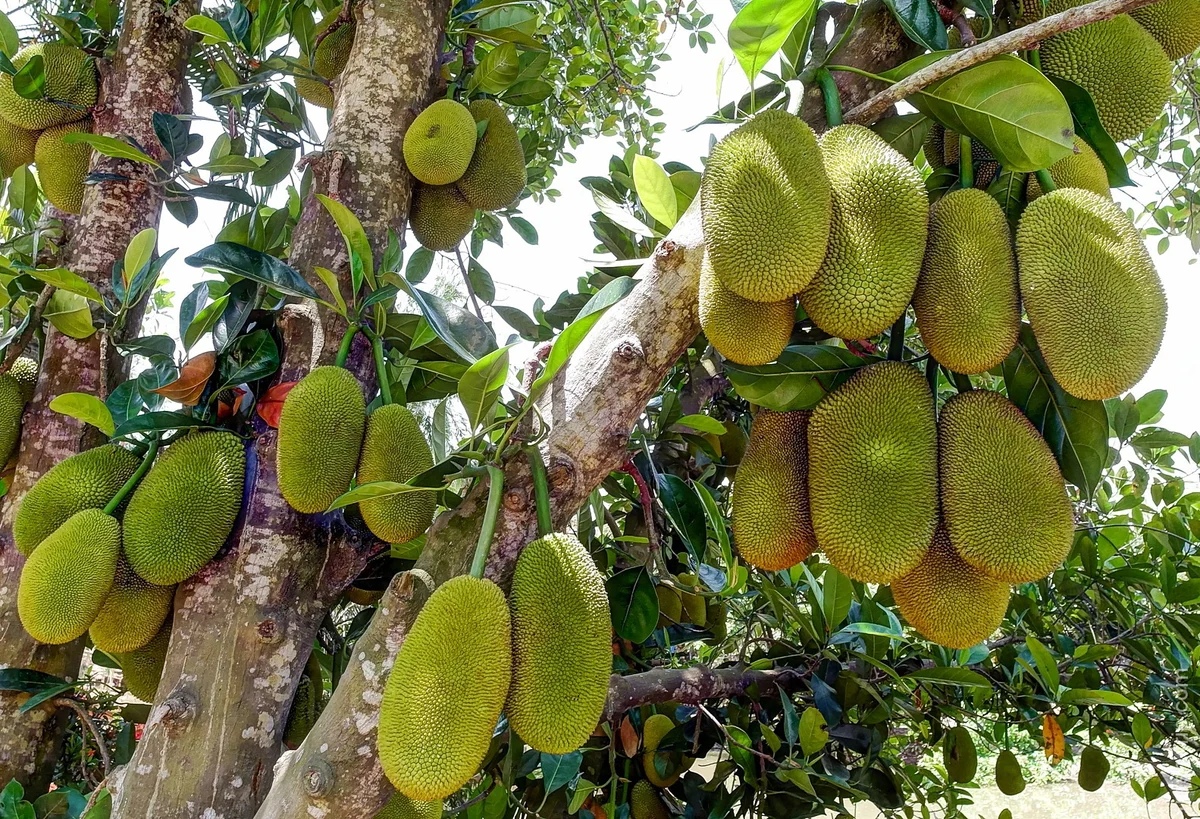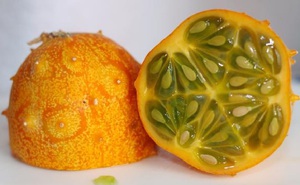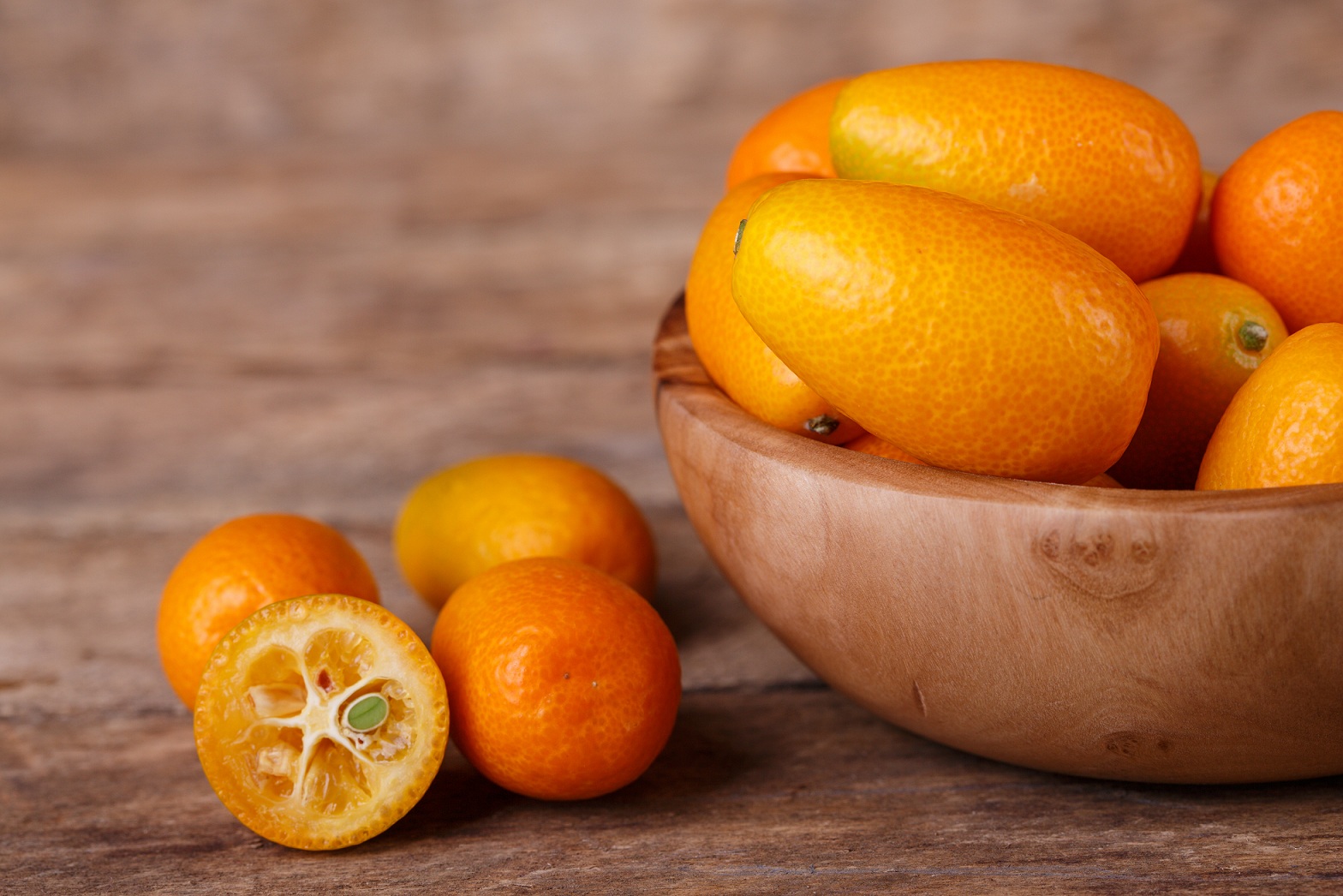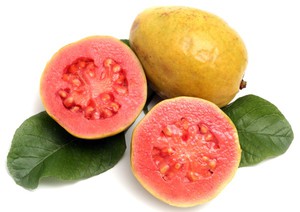 Guava is an evergreen tree, reaching a height of 4 m. It is included in the Myrtle family. It blooms 2 times a year and gives a bountiful harvest (up to 100 kg) per tree. Ripens 130 days after flowering. This is a very beautiful plant, guava. His photo confirms this.
Guava is an evergreen tree, reaching a height of 4 m. It is included in the Myrtle family. It blooms 2 times a year and gives a bountiful harvest (up to 100 kg) per tree. Ripens 130 days after flowering. This is a very beautiful plant, guava. His photo confirms this.
Rone plant is Central and South America... The Spaniards in Peru were the first to discover it. It can be found in the subtropics and tropics of Asia, Africa, North and South America.
Outwardly it looks like a yellow or green bumpy apple. It has an oval, pear-shaped or oblong shape. The pulp is bright red. Tastes like strawberry and pineapple... Unripe fruits of guava have a sour taste; in ripe fruits, it disappears. Fruit weight is from 80 to 170 g. By these signs, you can recognize the fruit in the photo. The calorie content of guava is 68 kcal per 100 g of fruit.
Benefits of Guava for the Body
This is a very healthy fruit. Its aboutthe main value is lycopene and potassium... Their content in guava is much higher than in tomato and banana.
This is a low calorie fruit rich in vitamins C and A at the same time, minerals. It contains flavonoids, fatty acids, polyphenols, and fats that prevent weight gain.
Medicinal properties of the fetus
- The fruit is endowed with immunostimulating, anti-cancer and anti-inflammatory properties.
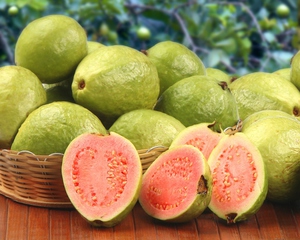 It stimulates the work of the heart system, normalizes blood pressure.
It stimulates the work of the heart system, normalizes blood pressure.- Indispensable in the treatment of pneumonia and bronchitis.
- Tea is brewed from the roots, which is drunk with diarrhea.
- The trace element copper found in the plant is essential for collagen production and normal blood formation.
- Improves the work of the endocrine system, promotes the production of hormones.
- Helps with bloating and constipation, speeds up the digestive process.
- It is an ideal fruit for pregnant women, containing a balanced composition of minerals and vitamins.
- Relieves tension and stress, helps to relax.
- Reduces blood glucose levels in patients with diabetes mellitus.
- Improves brain activity.
- It has a positive effect on the skin. The fruit can be used as a face mask.
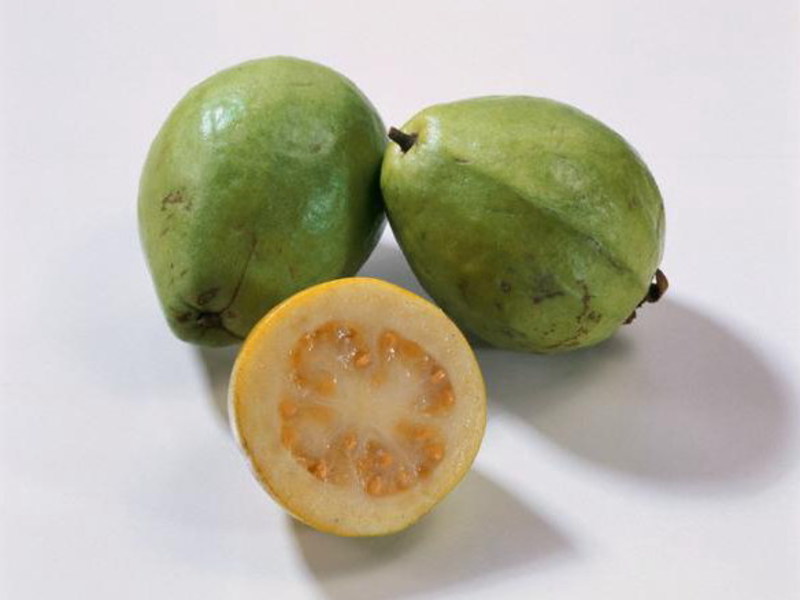
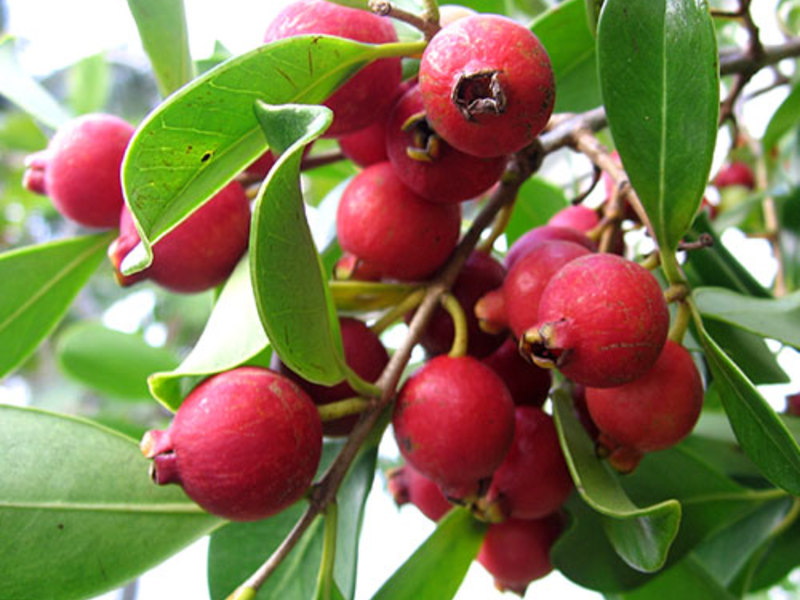

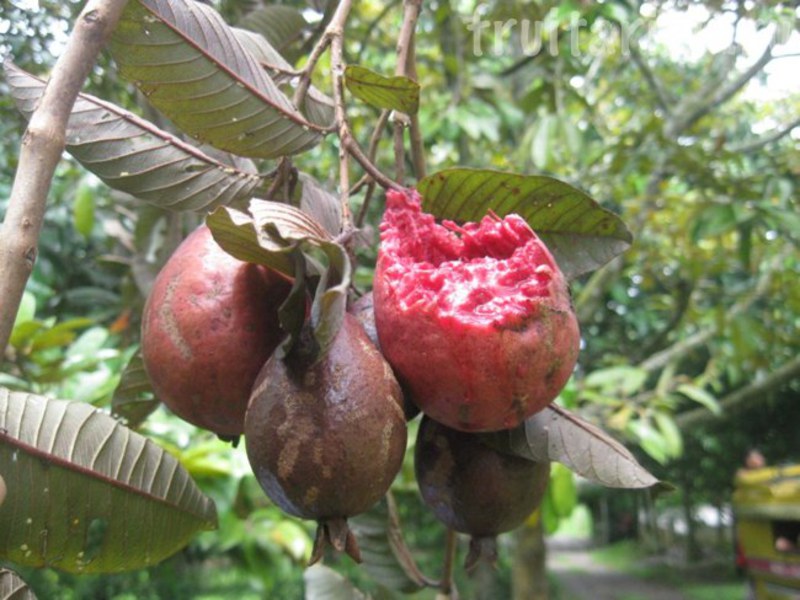
Dangerous properties of the plant
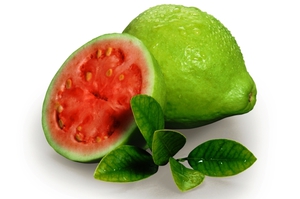 With excessive concurrent consumption of guava, indigestion can occur.
With excessive concurrent consumption of guava, indigestion can occur.- Allergy sufferers need to eat this fruit with caution.
- Unripe fruits, consumed in large quantities, negatively affect the kidneys and adrenal glands.
- The core of the fruit contains many very hard seeds. If you use the fruit carelessly, you can break or scratch your teeth. But the seeds can be swallowed, they perfectly clean the intestines.
How to eat guava
There are several ways to consume the fruit:
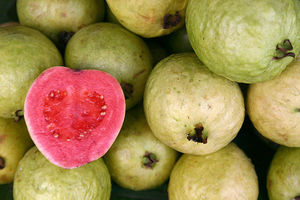 Since the guava peel is edible, the fruit can be eaten like apples.
Since the guava peel is edible, the fruit can be eaten like apples.- You can peel it and cut it into wedges for use in salads.
- You can cook different delicacies, make blanks.
- Chopped fruit pulp is served with cream.
- Pickled pieces of fruit can be served with meat dishes.
- Jelly and syrup are popular in tropical countries. For the preparation of ice cream and sherbet, fruit juice is used.
- Cheese is made from the dried guava pulp. This is a delicious oriental sweetness.
How to choose and store guava
The ripe fruit has a yellowish but unsaturated hue. Always a little soft to the touch.
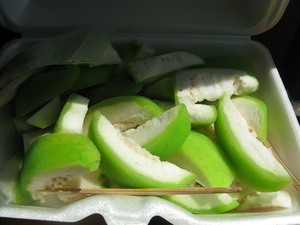 The fruit should not be overripe... This will be noticeable by its bruising, brown spots on the peel.
The fruit should not be overripe... This will be noticeable by its bruising, brown spots on the peel.
Keep at room temperature ripe fruit can be taken within a few days. Green - no more than 2 weeks. They can be kept in the refrigerator for 3 weeks.
Guavu cannot be stored for a long time with other products... The fruit is easily saturated with extraneous unpleasant odors.
It is recommended to store guava fruits in the freezer. They practically do not change either taste or quality.
Growing guava at home
For breeding guava at home conditions are excellent coastal psidium. This variety blooms profusely with snow-white flowers, as can be seen in the photo. The fruit is formed on a young growth. Therefore, it does not need crown formation. Only long and hanging branches are required to prune and remove excess root growth. This variety blooms after sowing for 3 years.
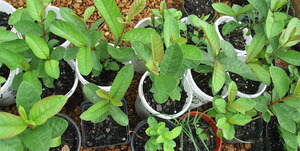 Seeds obtained from fruits germinate well enough... They can be sown directly after collection. A feature of the variety is its self-pollination.
Seeds obtained from fruits germinate well enough... They can be sown directly after collection. A feature of the variety is its self-pollination.
It is difficult to propagate a plant by cuttings... They require special conditions. Experts consider this variety to be the most suitable for home cultivation. He never gets sick with good care. He is not afraid of scale insects and fungal diseases, worms and aphids.
The Psidium Cattley variety has fruits up to 2 cm in diameter, red in color, round in shape (pictured), and tastes like strawberries.
Guava care
When preparing the soil, you should:
- To remove excess moisture, pour expanded clay on the bottom of the pot.
- Put in some mullein.
- Then add sand, peat and humus.
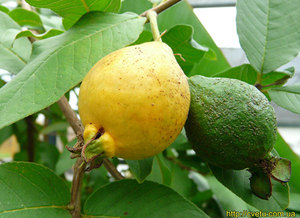
Guava light-loving and heat-loving plant... The temperature in the room should be maintained from 23 to 28 degrees C. When the sun's rays appear, it can be immediately taken out onto the loggia or balcony.
For moisturizing guava needs not only watering, but also pour over branches and leaves with a shower in hot weather. Zina temperature should not fall below +20 degrees C. At low temperatures, foliage is damaged. Young plants are especially sensitive to frost.
The root system of the plant is superficial. It is impossible to overdry the earthen lump, especially when shoots appear. The leaves will curl, and the young shoots will dry out.
In summer, watering is required abundant, in winter - as needed. You need to feed guava with infused mullein... Plants are transplanted that have reached 5 cm. But you can also transplant tall trees up to 70 cm in height. It is advisable to repot the plant several times. First, into a small container, then into a wider one. This is done in the spring, but not during the flowering or fruit period.
Recommendations
In order not to get overgrown and dense bushes, root shoots must be removed. You can't abruptly change the location of the guava... Because of this, she can even partially shed the foliage.
It is necessary to pinch the growth pointto get a branchy bush rather than a stem tree. You can pinch several times.
Disease prevention
To protect the plant pests and diseases are not required to use chemicals and pesticides. She has her own protection. Therefore, guava is one of the safest and purest exotic plants.
